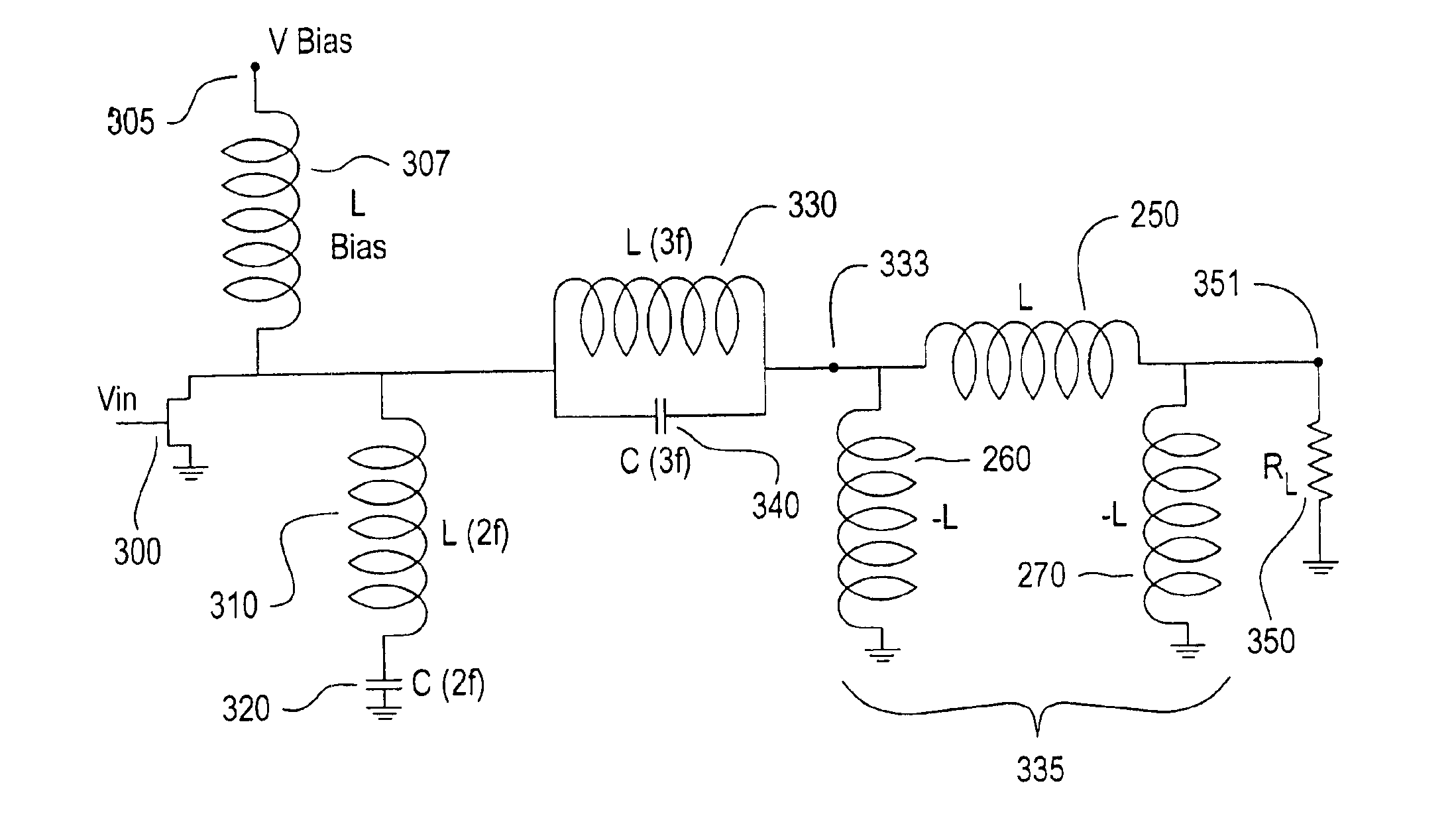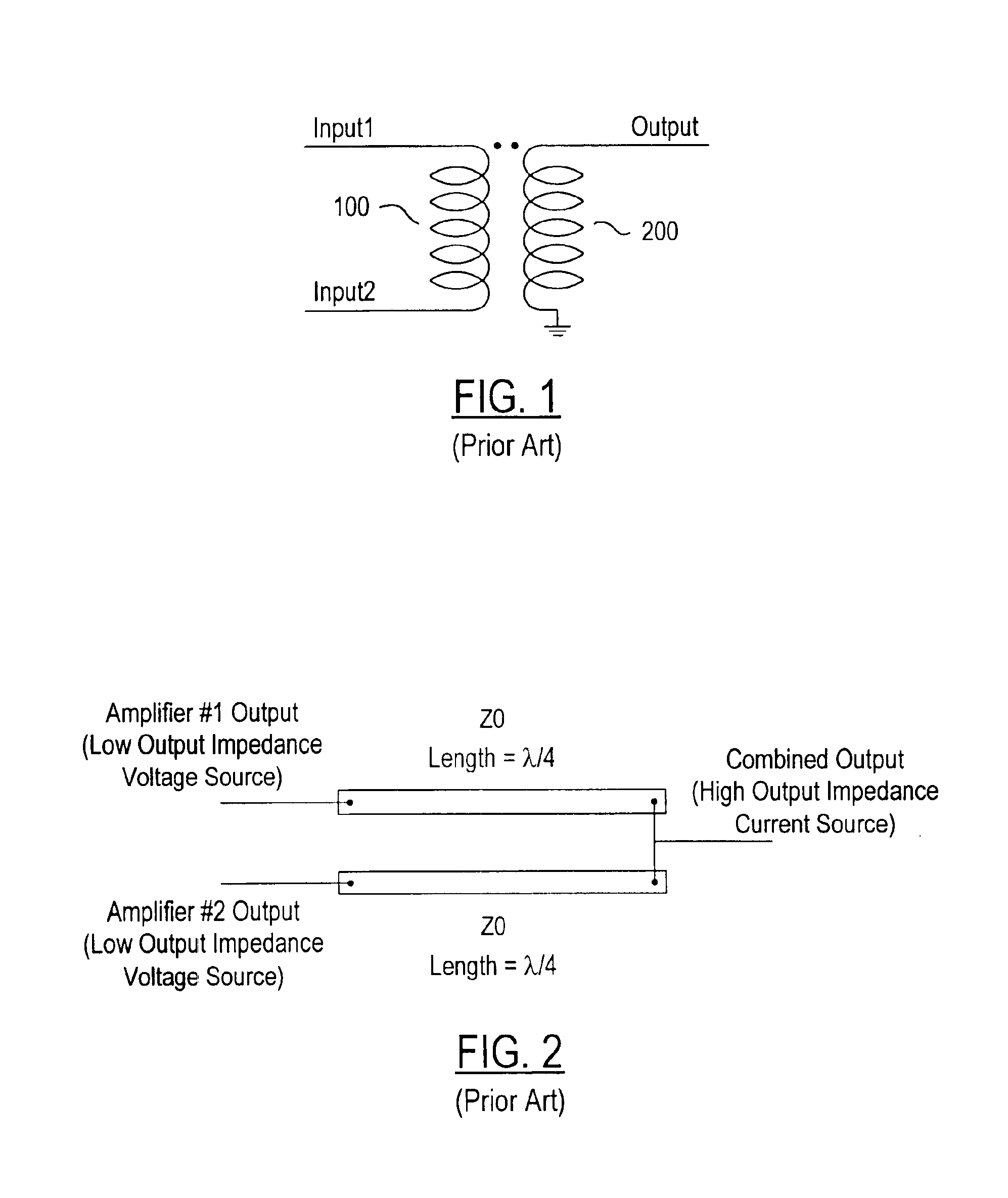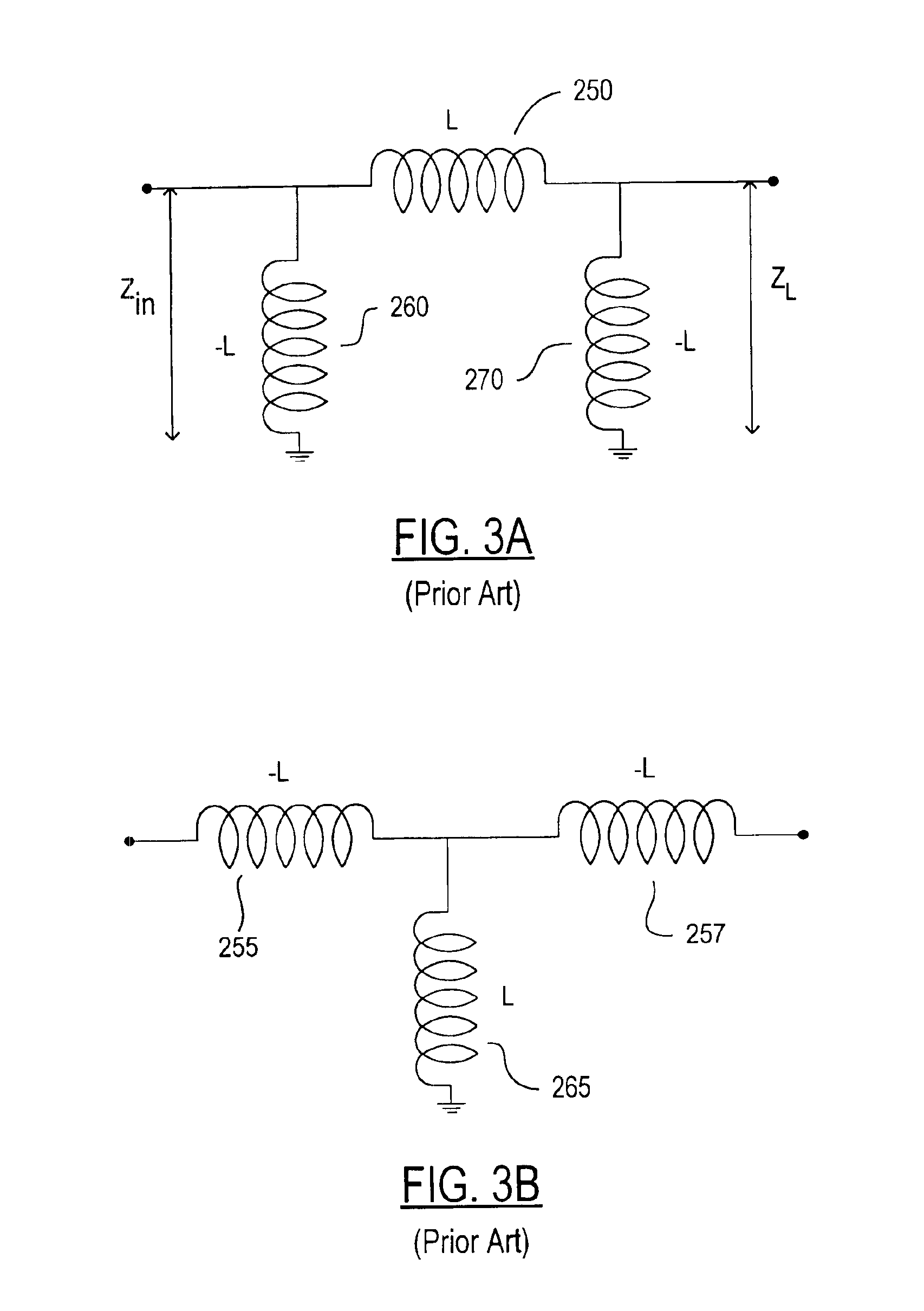Switched-mode power amplifier using lumped element impedance inverter for parallel combining
a technology of impedance inverter and lumped element, which is applied in the field of circuitry for radio, can solve the problems of insufficient isolation between the outputs of the two amplifiers of the appropriate combiner of the chireix-type amplifier, and the difficulty of achieving efficiency at the amplification/combination stage,
- Summary
- Abstract
- Description
- Claims
- Application Information
AI Technical Summary
Benefits of technology
Problems solved by technology
Method used
Image
Examples
Embodiment Construction
Surprisingly, the inventor has invented a Class F amplifier configured for parallel connection with at least one other like amplifier, for combining the outputs of such parallel connected amplifiers in a Chireix circuit architecture, which overcomes or avoids the disadvantages associated with the foregoing prior art transformer couplings used for combining amplifier outputs and impedance inverters in the form of quarter-wavelength transmission lines or lumped element equivalents thereto having negative reactive components.
As illustrated by FIG. 5, the present invention is achieved by first transforming, by means of an impedance inverter 335 (consisting of series positive inductor 250 and shunt negative inductors 260, 270), the output of a Class F amplifier (i.e. at terminal 333) from that of a low impedance voltage source to a high impedance current source so that such output-transformed amplifier may be connected in parallel with another like amplifier configuration to combine the ...
PUM
 Login to View More
Login to View More Abstract
Description
Claims
Application Information
 Login to View More
Login to View More - R&D
- Intellectual Property
- Life Sciences
- Materials
- Tech Scout
- Unparalleled Data Quality
- Higher Quality Content
- 60% Fewer Hallucinations
Browse by: Latest US Patents, China's latest patents, Technical Efficacy Thesaurus, Application Domain, Technology Topic, Popular Technical Reports.
© 2025 PatSnap. All rights reserved.Legal|Privacy policy|Modern Slavery Act Transparency Statement|Sitemap|About US| Contact US: help@patsnap.com



